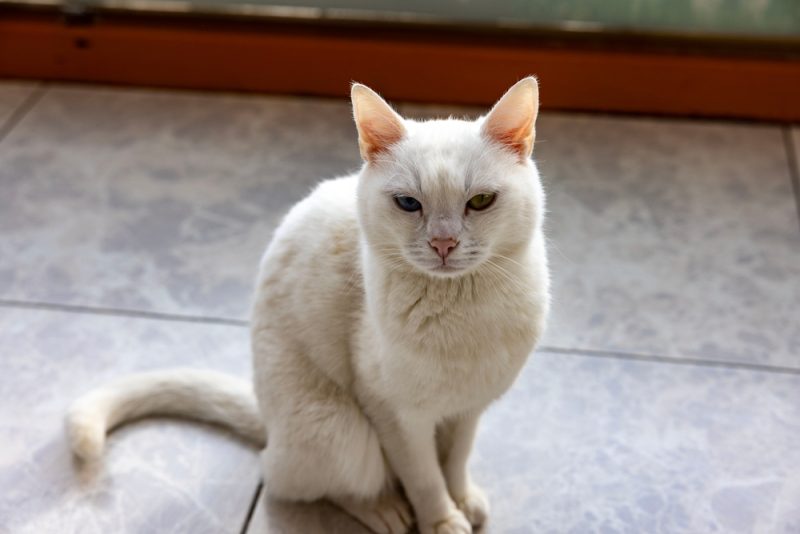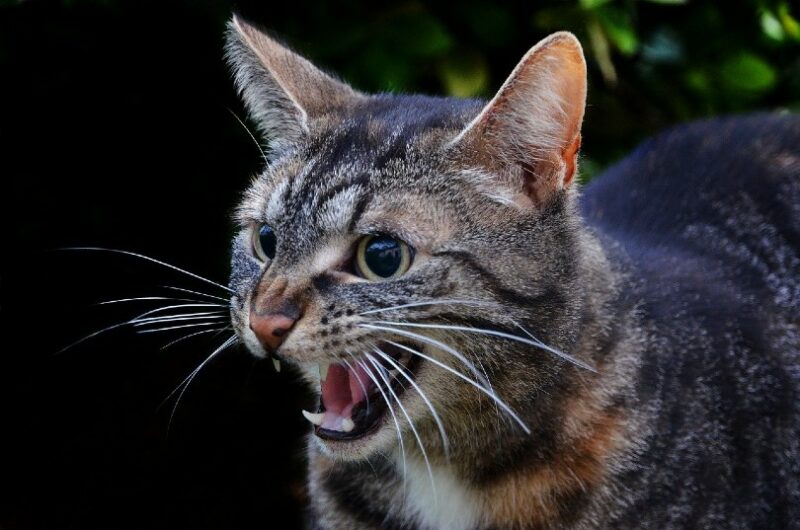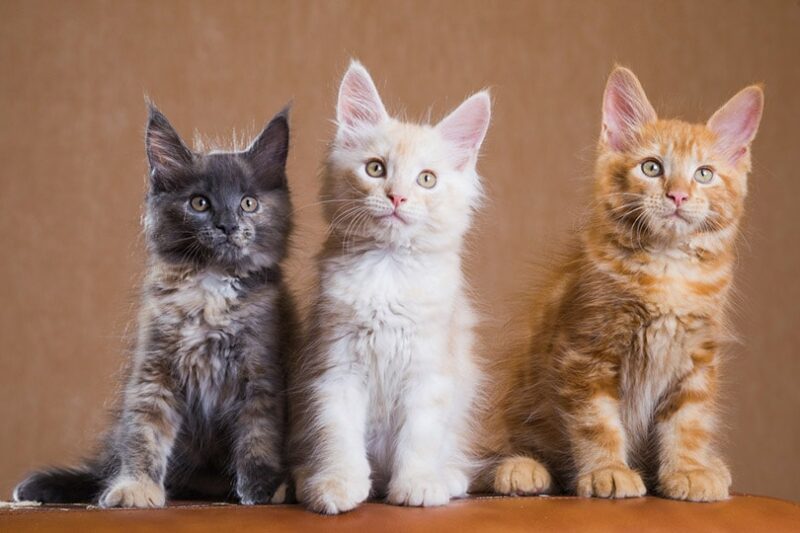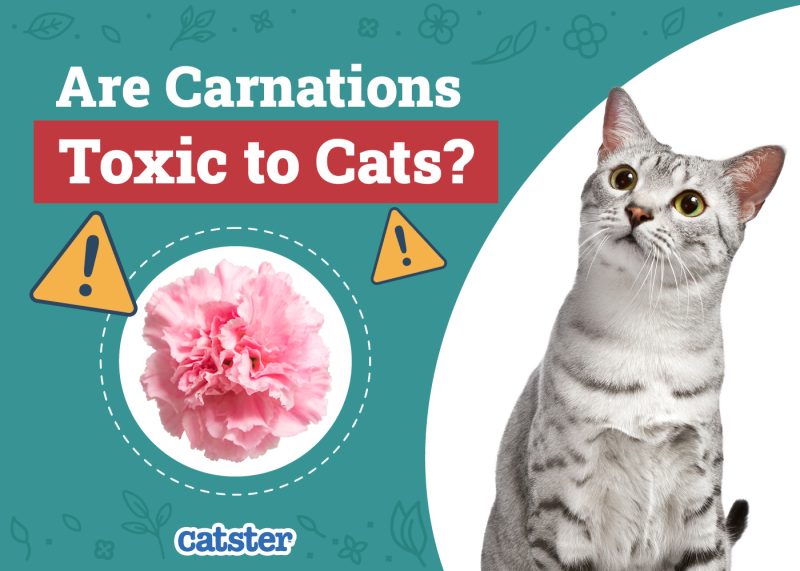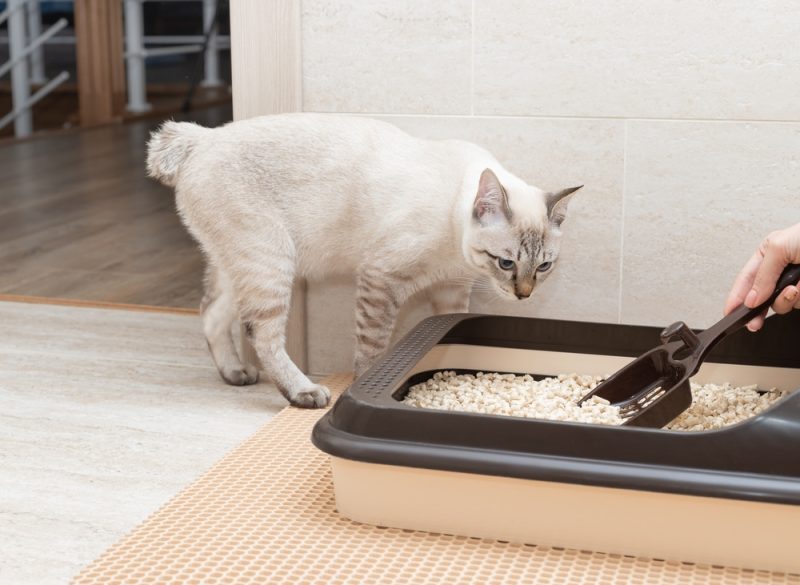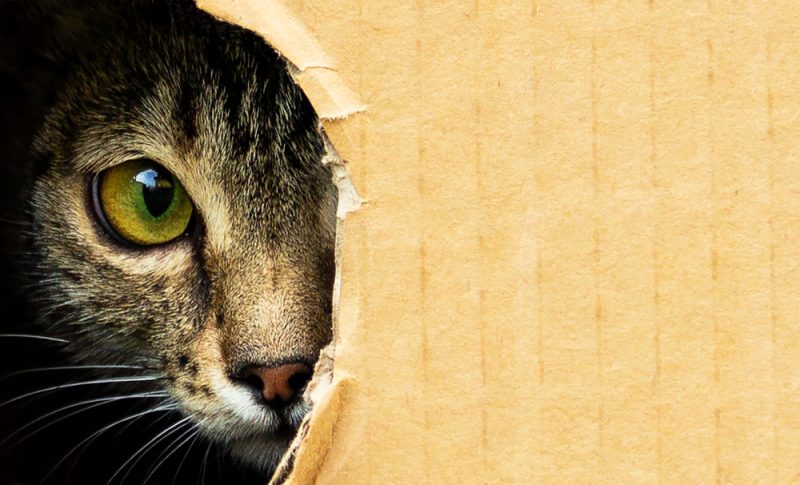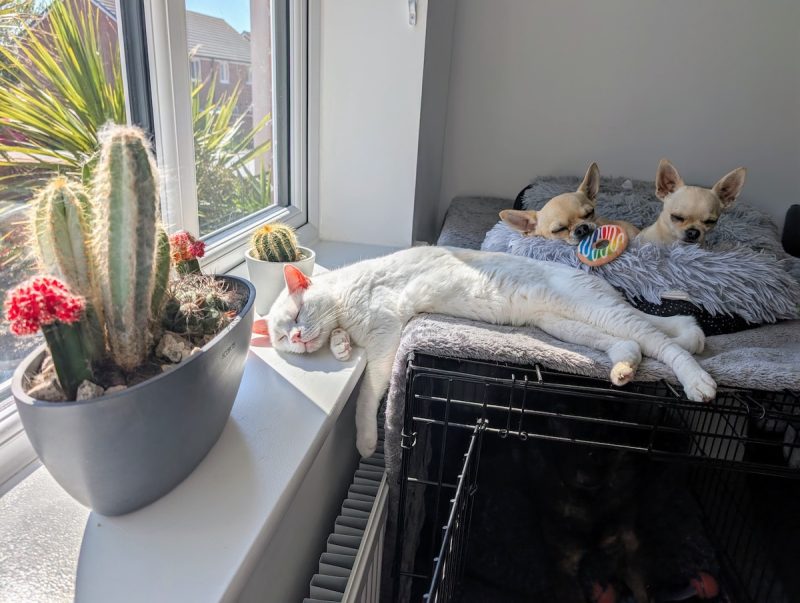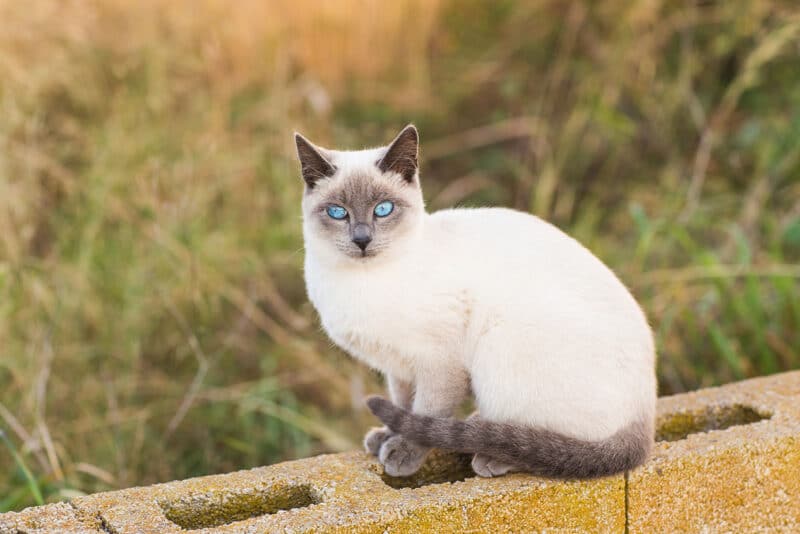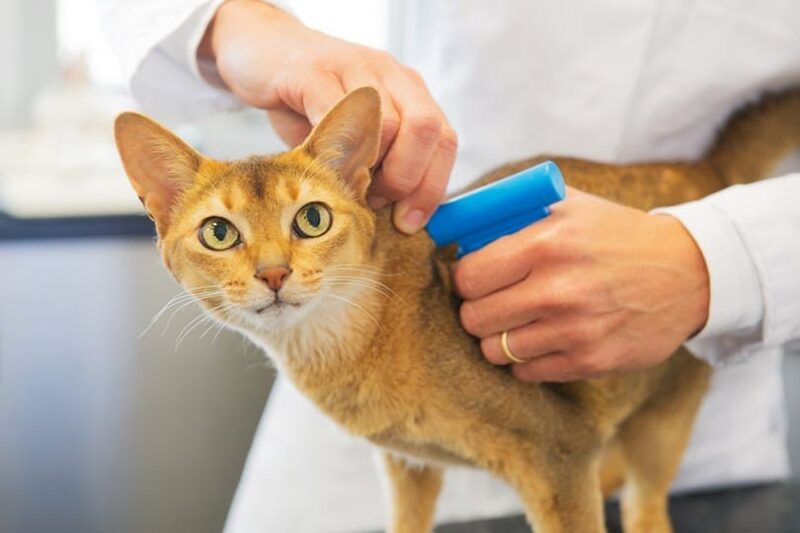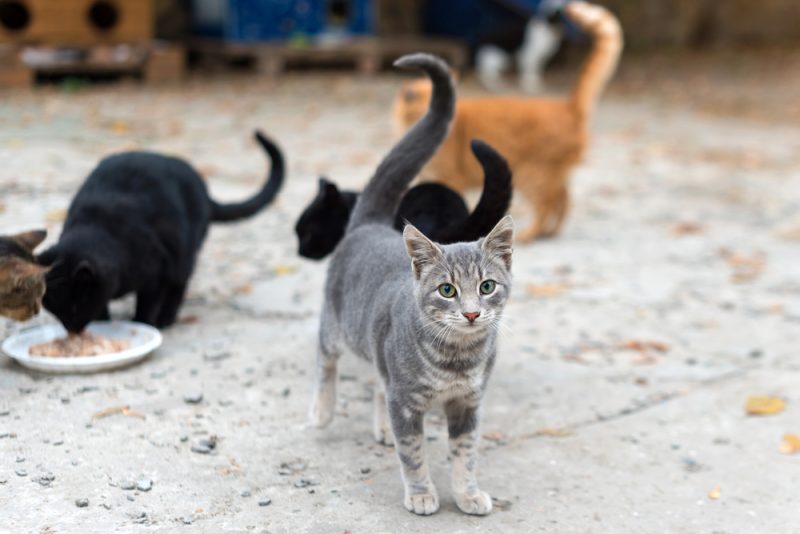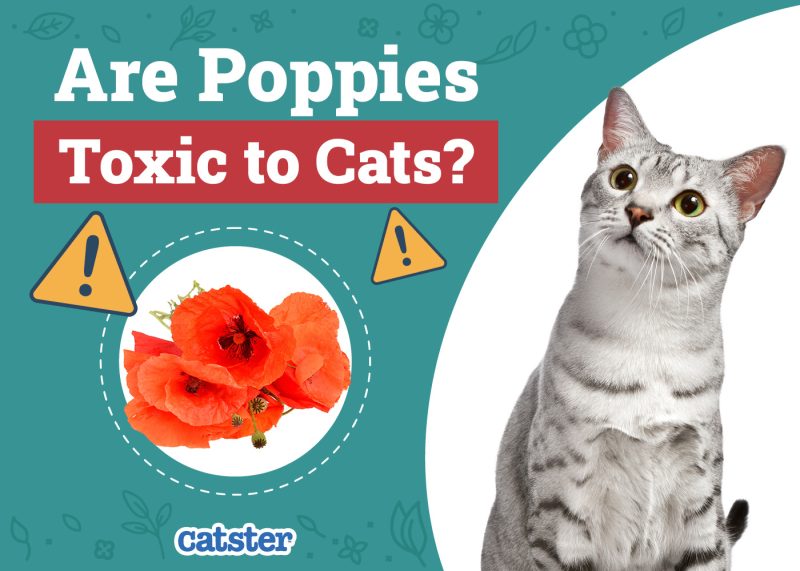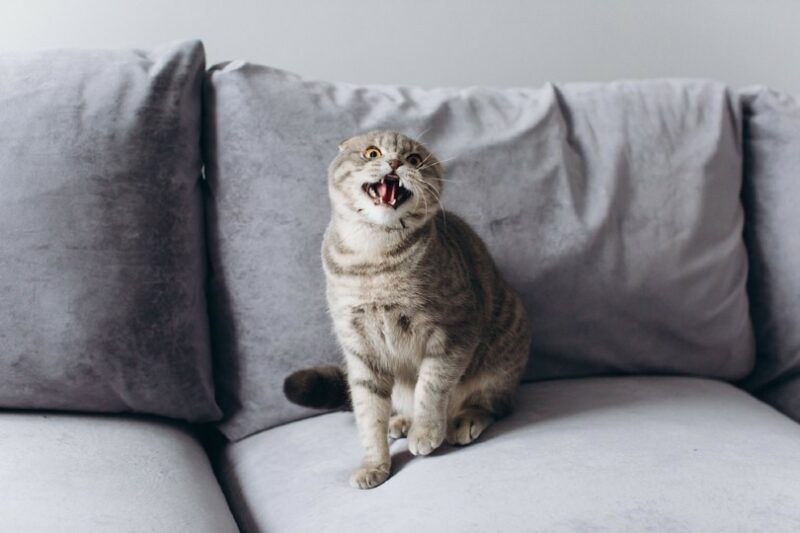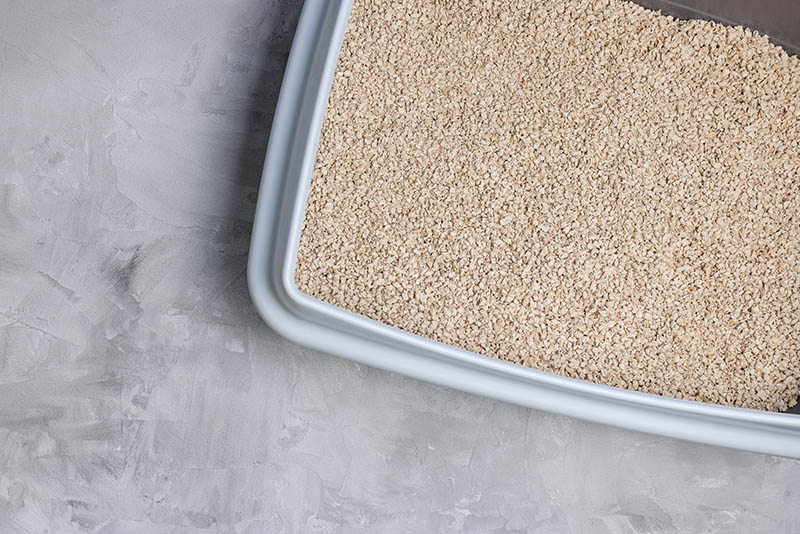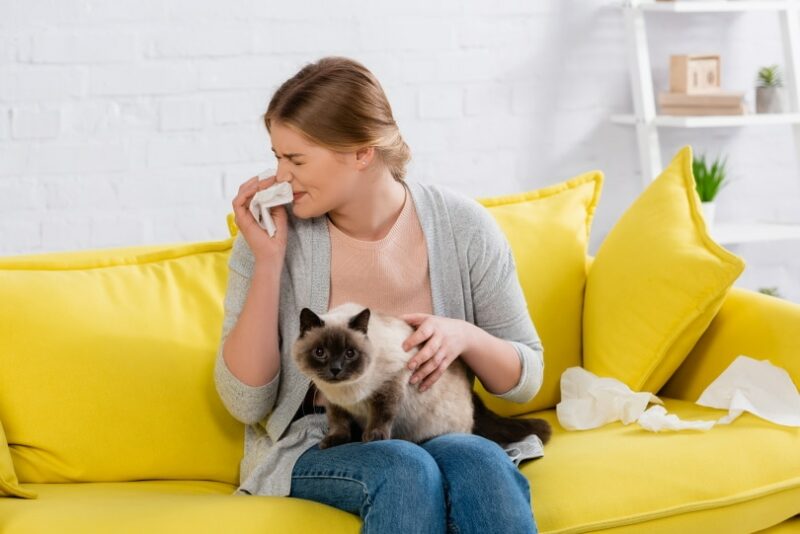Cats and flooring are a tricky combination. If cats aren’t creating time-intensive cleanups by shedding, spraying, or hacking up hairballs, they’re digging in claws and creating irreparable scratches around the room. With the cost of flooring and the effort it takes to install, you should do everything possible to avoid those everyday headaches.
There’s no single option to suit every situation. Each flooring material comes with unique benefits and disadvantages, with their value based on your needs, capabilities, and budget. We’ll explain how to keep you and your kitty happy by discussing the four best flooring for cats to install in your house.
The 4 Best Flooring for Cats
1. Tile
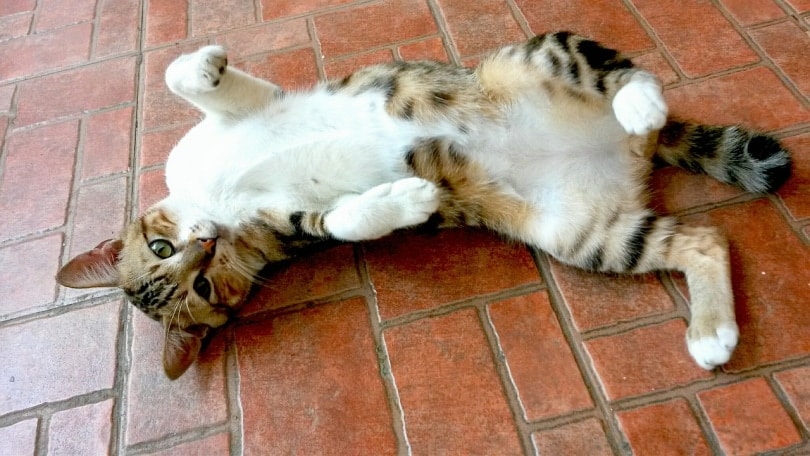
Tile and natural stone flooring are the most resilient and long-lasting options when you’re dealing with dog and cat claws. If anything, a cat scratching tile will do more to wear down their pointy nails than damage the ultra-hard surface. Unlike any other floor, you could have tile for years without a single sign of cat-related damage.
Scratch-Proof and Water-Resistant
Scratches are less of an issue with cats than dogs because they can retract their claws, but occasional damage is always possible. As possibly a greater concern, inappropriate elimination can also harm flooring, especially if it has open seams and wood components.
With tile and stone, you can pick your desired waterproofing level, helping you avoid any lasting urine damage. While many natural stone options like limestone or marble will let moisture seep through, glazed ceramic and porcelain are water-resistant enough to use in kitchens and bathrooms with little concern.
And, of course, if you’re insistent on the more porous options, you can seal your floors every few years to give them the same level of protection.
Thermoregulation for Your Cat
Persians, Ragdolls, and Maine Coons have a more difficult time keeping cool than most cats in adverse climates, primarily due to their long, thick coats. Cranking your A/C is one way to keep them comfy, but with a tile floor, that may be unnecessary.
Long-haired double-coated cats and dogs love to lie down on cool tile for relief from the heat, so choosing it for your installation can be as good for them as it is for you.
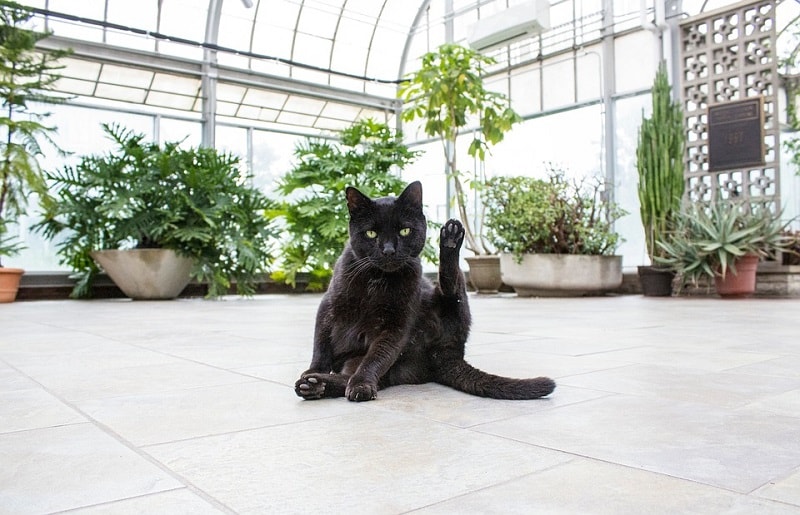
Drawbacks to Tile
With any tile style, the grout is a concern when mitigating cat urine damage. Grout creates a seamless transition between tiles but is porous. If you choose tile or stone, you’ll have to apply a protective grout sealant every 1–5 years, depending on the traffic in that area.
Before maintenance, you have to worry about the build, another key drawback of tile. For the average DIYer, tile is one of the more expensive and challenging flooring options to install. It can get messy if you’re inexperienced, you’ll need specialty tools, and the process is time-consuming.
For your cat, tile provides a chance to cool down but can also be slippery and hard under the foot. Landing on tile from high perches is harder on the joints, and arthritic cats may have issues with an overly slick surface. If your cat frequents the room, you may consider getting runners and mats to give them a softer grip.
- Highly durable and long-lasting
- Scratch-proof and water-resistant
- Beautiful, authentic aesthetic
- Easy to clean with wet or dry methods
- Can cool your cat down
- Ideal for wet areas like kitchens, bathrooms, and mudrooms
- May be uncomfortable underfoot
- Not practical for all rooms
- High-quality tile is expensive
- Grout needs regular maintenance
- Installation can be complex
2. Concrete
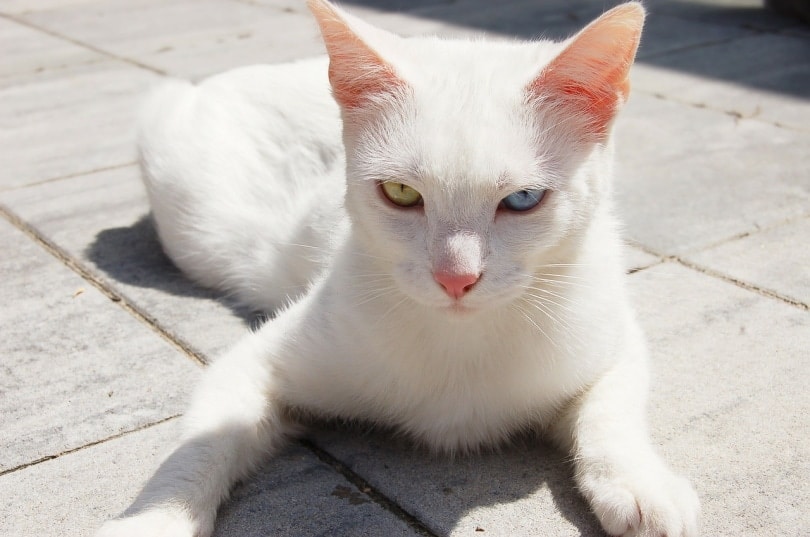
Concrete is surprisingly glamorous in modern indoor areas, providing a high-end urban industrial vibe that gels with multiple styles. As a poured form, it can take on all kinds of colors, shapes, and textures. Elements like dyes, aggregates, and stamps make it limitlessly customizable, ensuring you get the perfect look for the room.
Like tile, concrete is easy to maintain with a broom, vacuum, or mop, so your cat’s shedding and random accidents won’t cause any cleaning fits. It’s cool to the touch, giving your cat a relaxing place to lie on a hot day, and you can prepare it with underfloor heating for complete control over the comfort.
Drawbacks to Concrete Flooring
Many of concrete’s drawbacks are similar to those of tile. It can be challenging to install, depending on your layout and wants, and the heaviness can make it impractical for under-supported subfloors.
You’ll need to seal it every few years to keep cat accidents from seeping into its porous surface and leaving lasting stains. During everyday use, the hardness and slickness can put extra pressure on your cat’s legs.
Concrete floors can also be susceptible to cracking from moisture penetration from underneath, settling, and thermal expansion. While it won’t necessarily ruin the floor, you’ll need to patch those spots as necessary to maintain the look.
- Significant design flexibility
- Typically, more affordable than tile
- Scratch-proof and water-resistant
- Highly durable and long-lasting
- Easy to maintain with wet or dry methods
- Cats may enjoy the cool surface
- Susceptible to cracking
- Needs occasional resealing
- Heavy and not appropriate for every room
- Hard and slippery
3. Luxury Vinyl
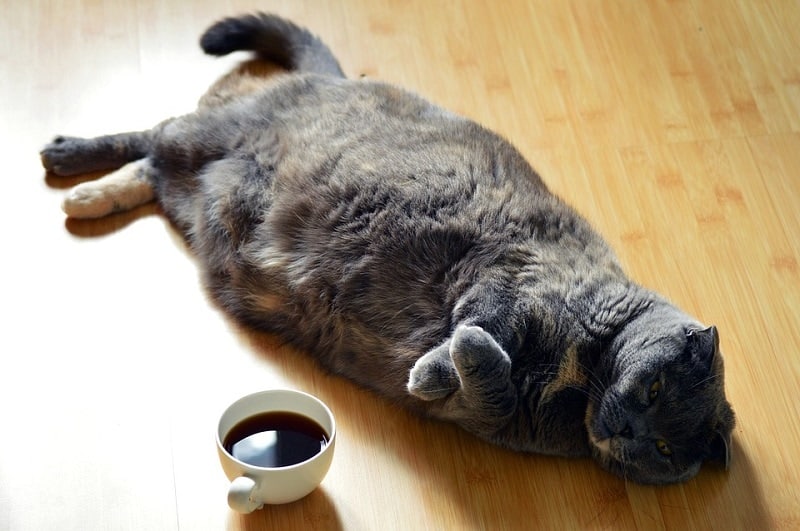
Vinyl flooring comes in sheets that create a seamless, waterproof cover for your floor or interlocking planks. Luxury vinyl planks are a top choice for their surprisingly authentic appearance to wood or stone textures and excellent value. LVP is waterproof (or, at least, water-resistant), easy to sweep and mop, and durable, often lasting over 20 years.
Different Cores and Your Cat’s Comfort
Standard vinyl flooring features a vinyl core. However, newer rigid core products using either a wood-plastic composite (WPC) or stone-plastic composite (SPC) are overtaking the market and adding another level of durability and quality. When considering your cat’s comfort, distinguishing between these styles could be significant.
WPC flooring is generally a bit thicker but less dense than SPC flooring, allowing for more give. It’s softer underfoot, a point which you and your older cat may appreciate with daily use. To its credit, SPC flooring stays cooler thanks to the stone core, providing some relief for your cat on a hot day, and is generally more durable and dent-proof.
Easiest Installation
LVP has come a long way in looks and quality, becoming a high-value replacement for many synthetic alternatives. They come in planks or tiles consisting of vinyl or rigid cores with an overlying print showing the texture and color under a transparent wear layer. With many having a cushioned backing, you may not need underlayment to get started.
All this equals a short and sweet installation process with fewer steps than any other flooring material. The planks are easy to cut to fit, snapping cleanly at scored lines. In some cases, all you’ll need to lay an LVP floor is a utility knife and a tape measure.
You can use the click-lock system that replaces tongue-and-groove to create a secure hold between planks with one simple motion, and you can knock out a basic installation in only a few hours.
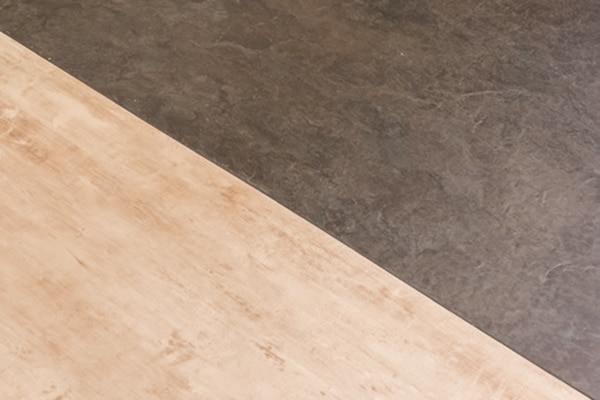
Drawbacks to Luxury Vinyl Flooring
Although LVP’s temperature neutrality won’t provide the same cooling sensation of tile on a hot day, cats will appreciate the softer feel underfoot and improved traction compared to tile, concrete, and wood. Unfortunately, their claws won’t be as forgiving on the surface.
Most LVP flooring has a polyurethane or PVC coating that cats can easily scratch with sharp claws. The wear layer comes in varying thicknesses, with the thicker ones withstanding traffic for longer before the underlying print layer becomes exposed. Many fail to realize that a thicker wear layer doesn’t make it harder, and scratches can appear just as readily.
- Extremely easy to install and replace planks
- Usable in virtually any room
- Provides better traction for cats
- Numerous colors and textures are available
- Easy to clean with wet or dry methods
- Susceptible to scratches
- Not as eco-friendly as natural alternatives
4. Laminate
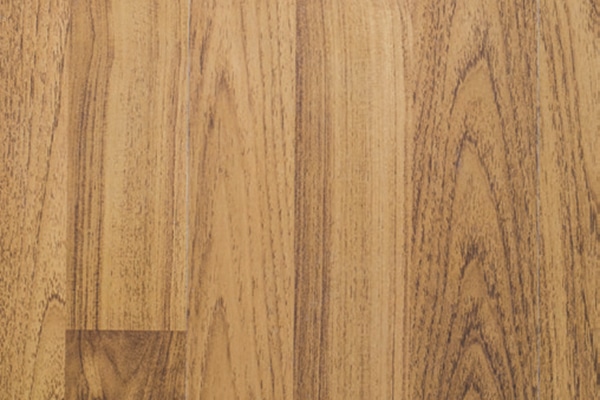
Available only in planks, laminate flooring is similar to LVP flooring, the primary distinction being the fiberboard core versus vinyl’s PVC, wood-polymer, or stone-polymer core.
Like LVP, laminate planks are quick and easy to install, though you’ll need a saw to get clean cuts. It offers diverse color and texture options in natural replications that many find even more realistic than luxury vinyl. Laminate is much less expensive than real hardwood but is more similar to it in look and feel than many LVP alternatives.
Drawbacks to Laminate
Although the price is comparable, laminate isn’t as easy to maintain as LVP. As it acts more like wood flooring, it’s slightly more demanding to install and can’t tolerate moisture as handily as synthetic materials.
When you have pets, vinyl is a better choice than laminate because its waterproof design will help mitigate damage from urine. Since it contains an organic core, laminate that soaks in water is more likely to warp, separate, and become moldy. Apart from cat urine, it also can’t handle wet mopping and other cleaning methods like LVP. It’s less versatile as a result, working best only in dry areas of the house.
- Low price similar to luxury vinyl
- Easy to install and replace
- Closer to authentic wood look and feel
- Available in numerous colors and textures
- Doesn’t tolerate wet cleaning methods
- Susceptible to scratches
- Not as versatile as LVP
Frequent Asked Questions
What Type of Wear Layer Will Hold Up to Cat Claws?
Cat claws aren’t particularly hard, but they’re more than enough to dig into the plastic coating on vinyl flooring. While the wear layer’s thickness will help you compare its longevity, the composition determines whether it’s scratch-resistant.
Some LVP coats use aluminum oxide, ceramic beads, and UV curing systems that add to the wear layer’s stain, scratch, and scuff resistance, ultimately affecting the material’s lifespan.
The price is the best quality indicator, and you can get information by reading the questions and comments section of most product pages. Laminate floors offer AC ratings of 1–6, with the higher number meaning a more abrasion-resistant and impact-resistant material.
In general, LVP and laminate are more scratch-resistant than expensive hardwood, making them ideal options for cat owners. But no matter the quality, they’ll all wear and scratch to a certain extent. If you need complete scratch-proof flooring, you’ll want to use tile, stone, or concrete.
Should You Get an Area Rug?
Area rugs are an excellent idea for any cat-friendly flooring style. With many hard flooring options having some slickness, an area rug can give your cat a sturdy, comfortable grip as they navigate the room.
On tile floors, the added cushion will be gentler on the legs, joints, and back and provide a warmer surface. Look for rugs you can wash in the machine to make shed fur and pee stains easier to manage.
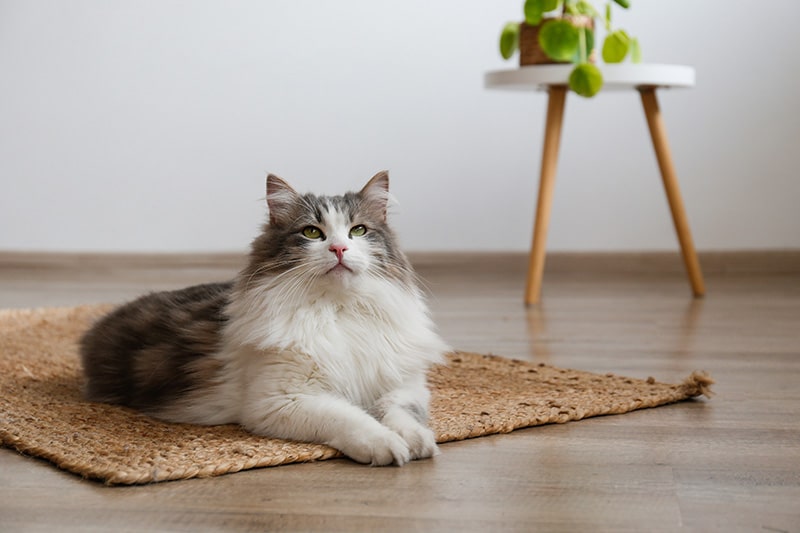
Will My Flooring Warranty Cover Cat Damage?
Although manufacturers have long-term warranties on their flooring, they do not cover cat stains, scratches, or other damage. Only inherent defects you have no control over will warrant repair or replacement at the company’s expense. Beyond that, properly maintaining, sealing, and covering your flooring to prevent wear and damage will be your responsibility.
Conclusion
Considering the cost and care, flooring like carpet, hardwood, and bamboo becomes much less practical when you add pets to the fray. While scratching is less of a concern than with dogs, cats can still dig in their nails, and there’s always the risk of an accident outside the litter box. With any of these top four cat-friendly flooring options, you can be confident it will weather whatever your pet dishes out.
See Also:
Featured Image Credit: Bahtiyar Hisar, Shutterstock
